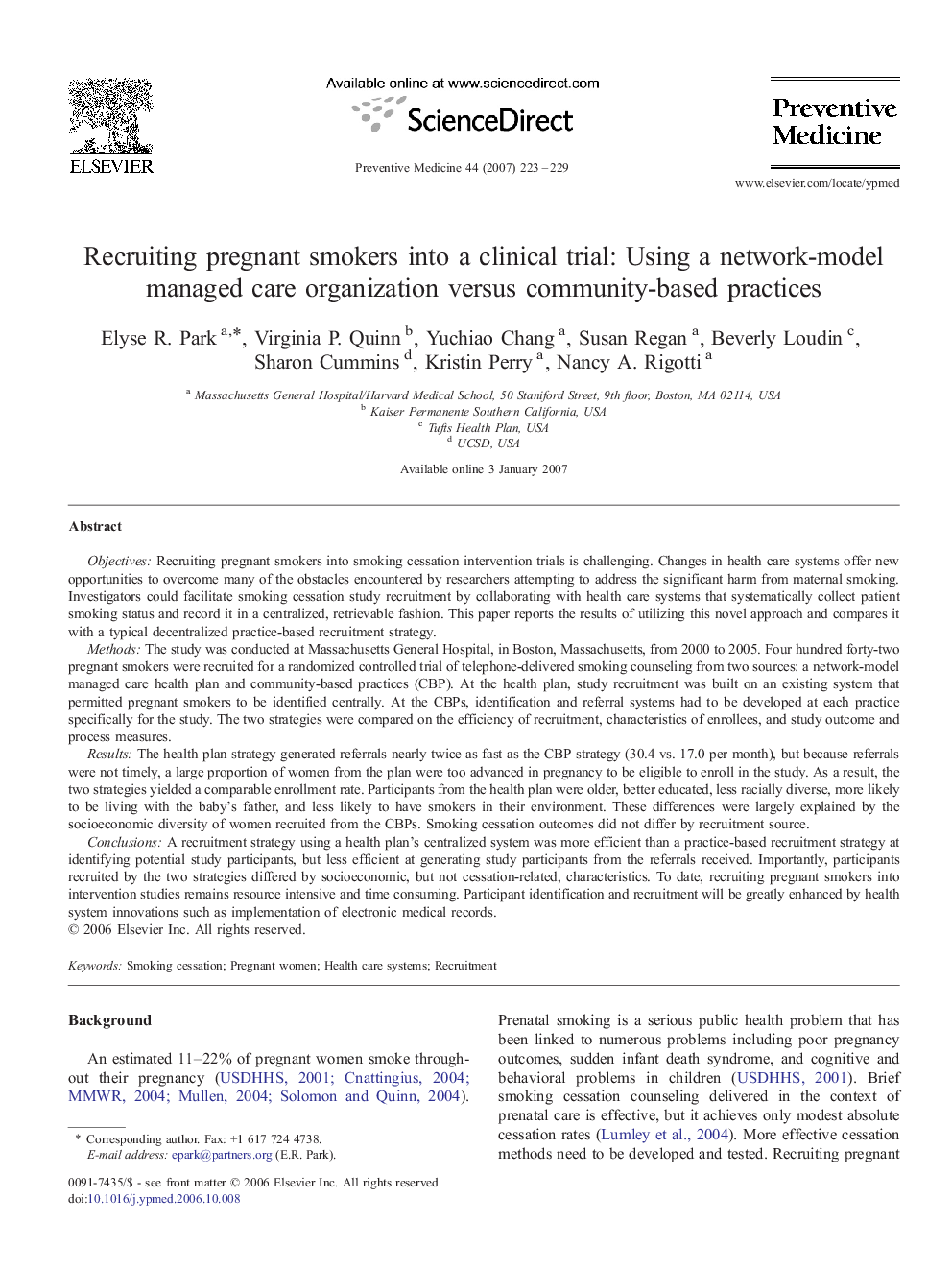| کد مقاله | کد نشریه | سال انتشار | مقاله انگلیسی | نسخه تمام متن |
|---|---|---|---|---|
| 3102063 | 1191282 | 2007 | 7 صفحه PDF | دانلود رایگان |

ObjectivesRecruiting pregnant smokers into smoking cessation intervention trials is challenging. Changes in health care systems offer new opportunities to overcome many of the obstacles encountered by researchers attempting to address the significant harm from maternal smoking. Investigators could facilitate smoking cessation study recruitment by collaborating with health care systems that systematically collect patient smoking status and record it in a centralized, retrievable fashion. This paper reports the results of utilizing this novel approach and compares it with a typical decentralized practice-based recruitment strategy.MethodsThe study was conducted at Massachusetts General Hospital, in Boston, Massachusetts, from 2000 to 2005. Four hundred forty-two pregnant smokers were recruited for a randomized controlled trial of telephone-delivered smoking counseling from two sources: a network-model managed care health plan and community-based practices (CBP). At the health plan, study recruitment was built on an existing system that permitted pregnant smokers to be identified centrally. At the CBPs, identification and referral systems had to be developed at each practice specifically for the study. The two strategies were compared on the efficiency of recruitment, characteristics of enrollees, and study outcome and process measures.ResultsThe health plan strategy generated referrals nearly twice as fast as the CBP strategy (30.4 vs. 17.0 per month), but because referrals were not timely, a large proportion of women from the plan were too advanced in pregnancy to be eligible to enroll in the study. As a result, the two strategies yielded a comparable enrollment rate. Participants from the health plan were older, better educated, less racially diverse, more likely to be living with the baby's father, and less likely to have smokers in their environment. These differences were largely explained by the socioeconomic diversity of women recruited from the CBPs. Smoking cessation outcomes did not differ by recruitment source.ConclusionsA recruitment strategy using a health plan's centralized system was more efficient than a practice-based recruitment strategy at identifying potential study participants, but less efficient at generating study participants from the referrals received. Importantly, participants recruited by the two strategies differed by socioeconomic, but not cessation-related, characteristics. To date, recruiting pregnant smokers into intervention studies remains resource intensive and time consuming. Participant identification and recruitment will be greatly enhanced by health system innovations such as implementation of electronic medical records.
Journal: Preventive Medicine - Volume 44, Issue 3, March 2007, Pages 223–229